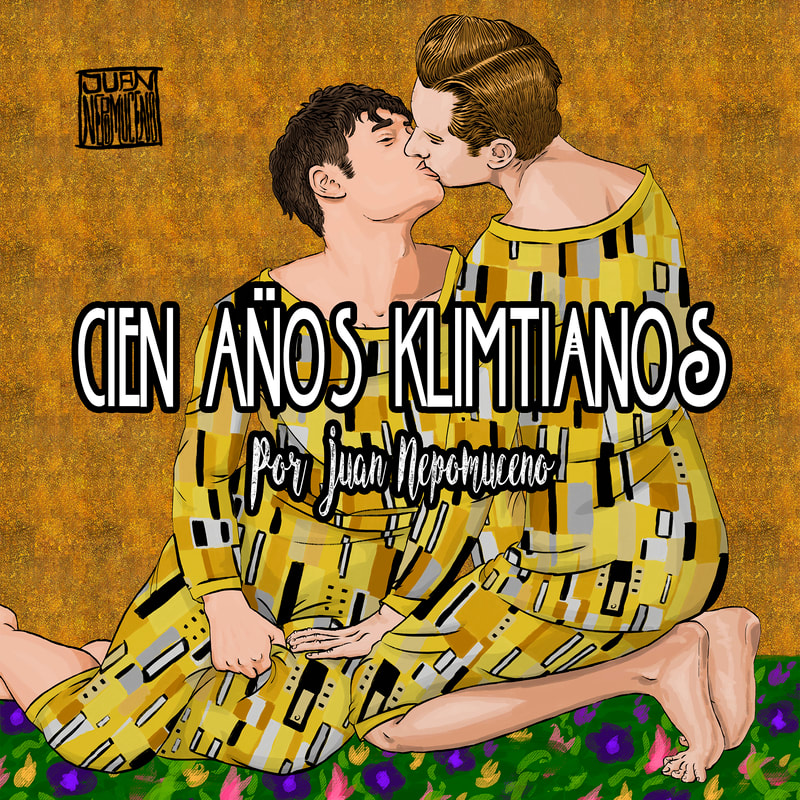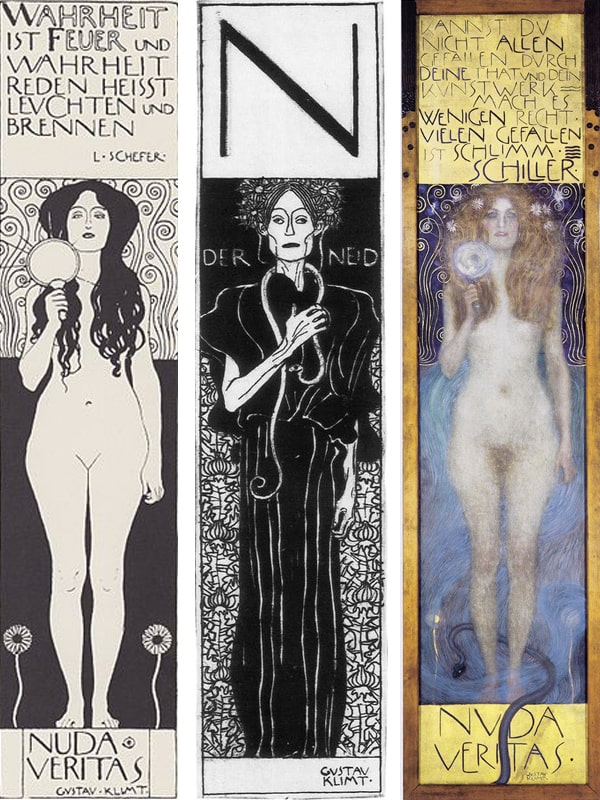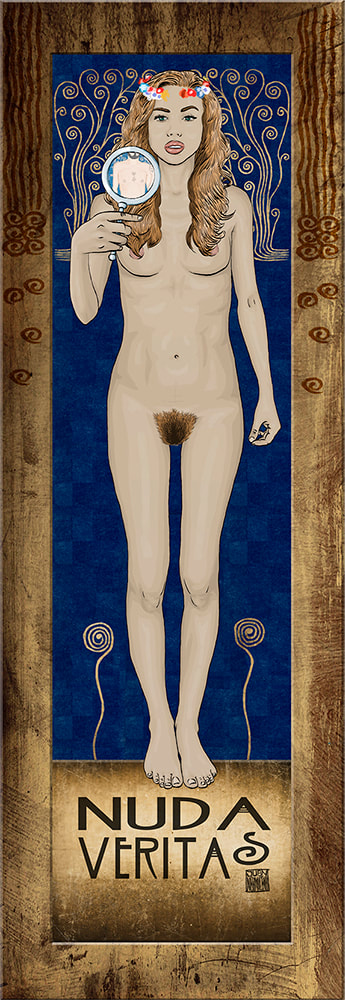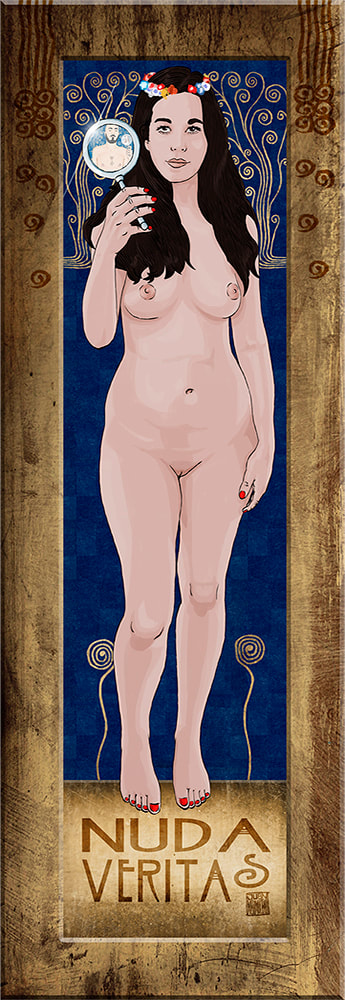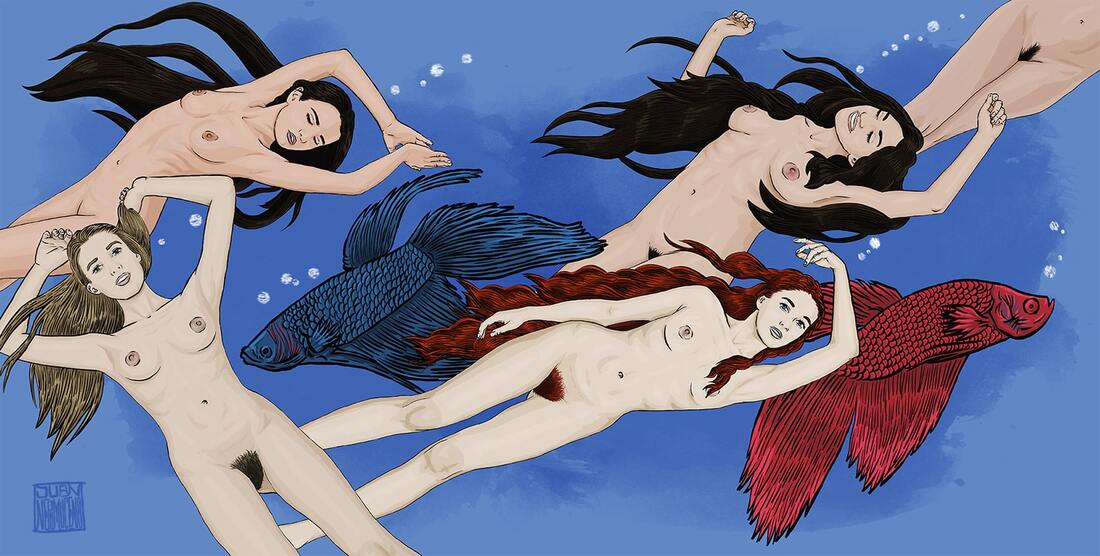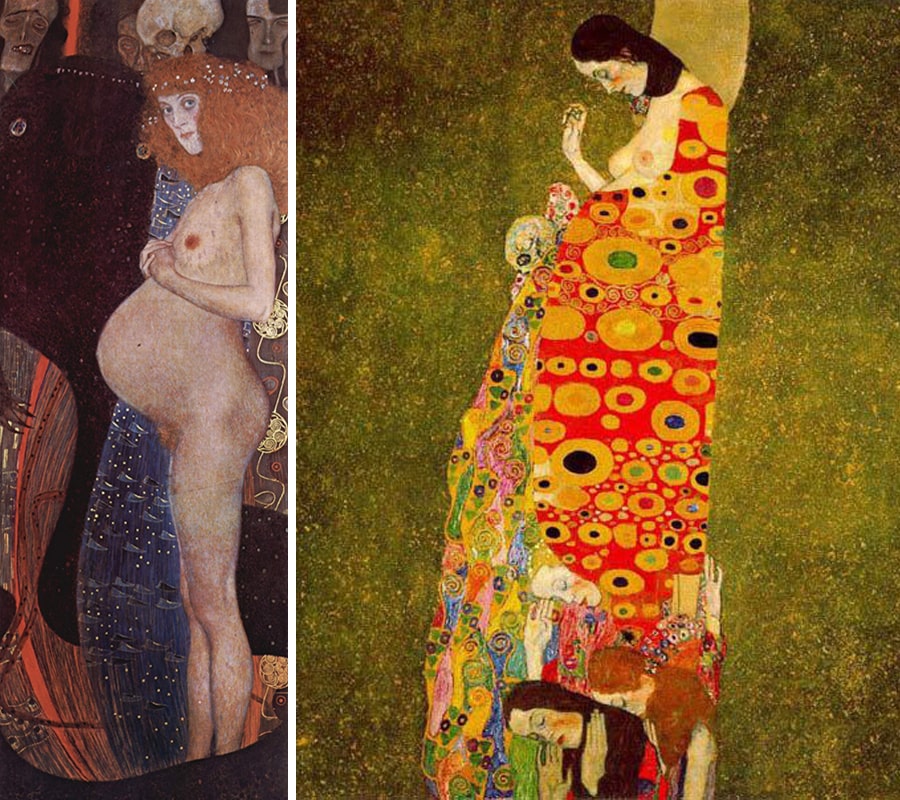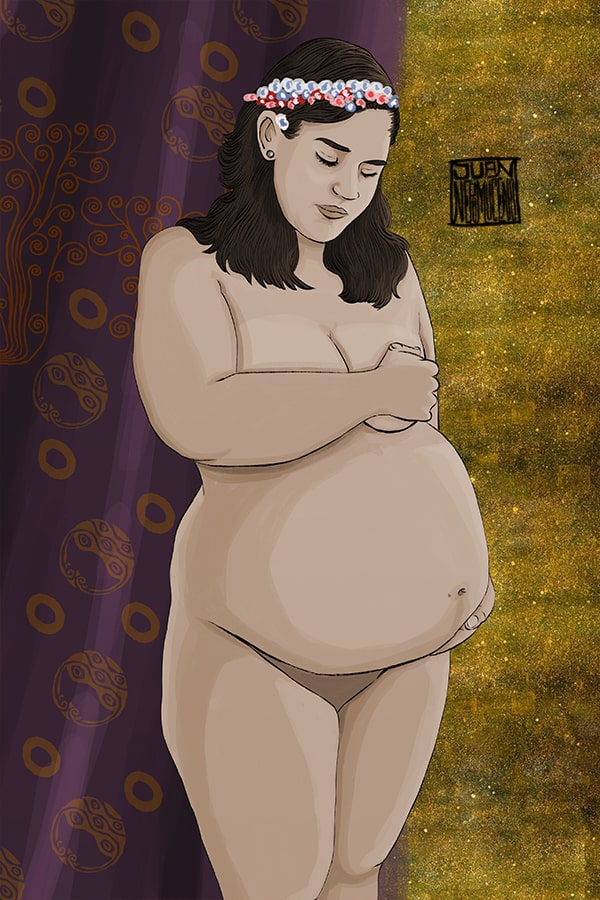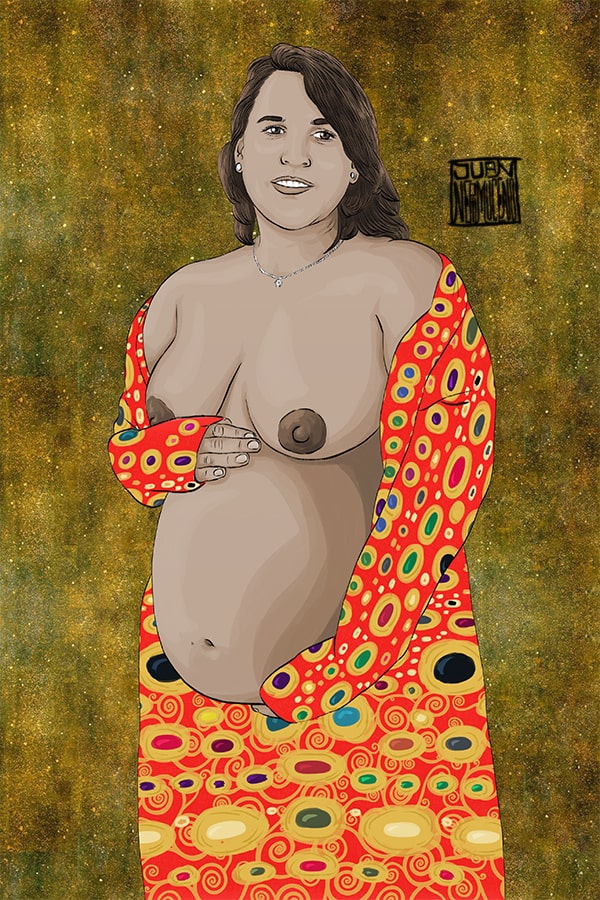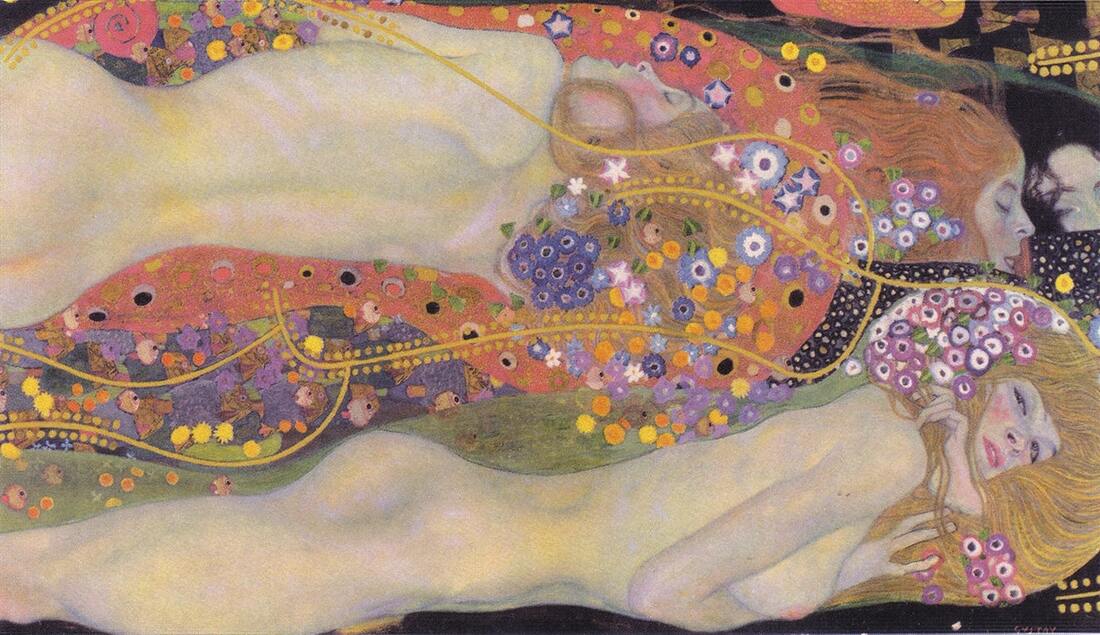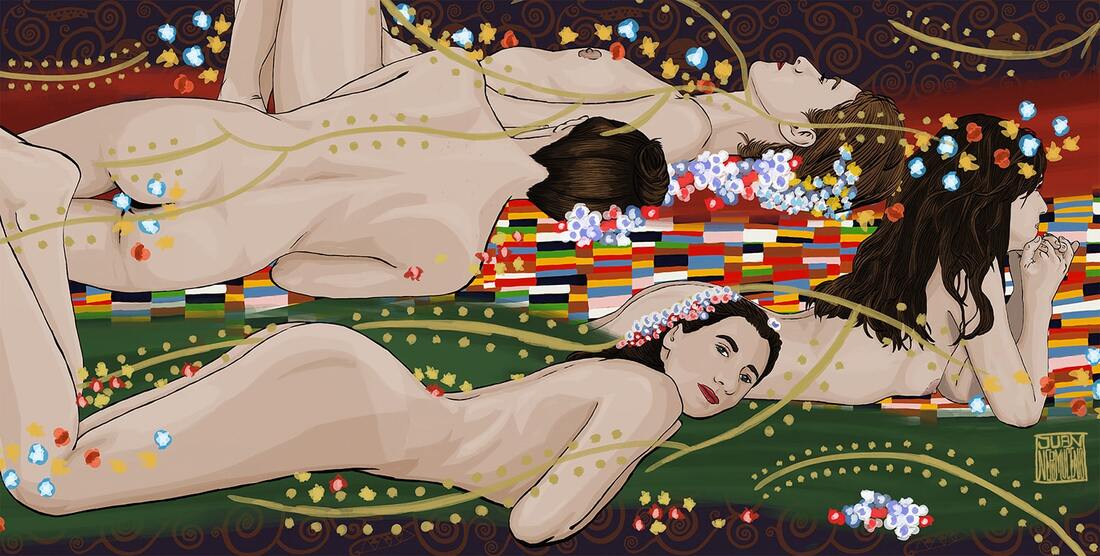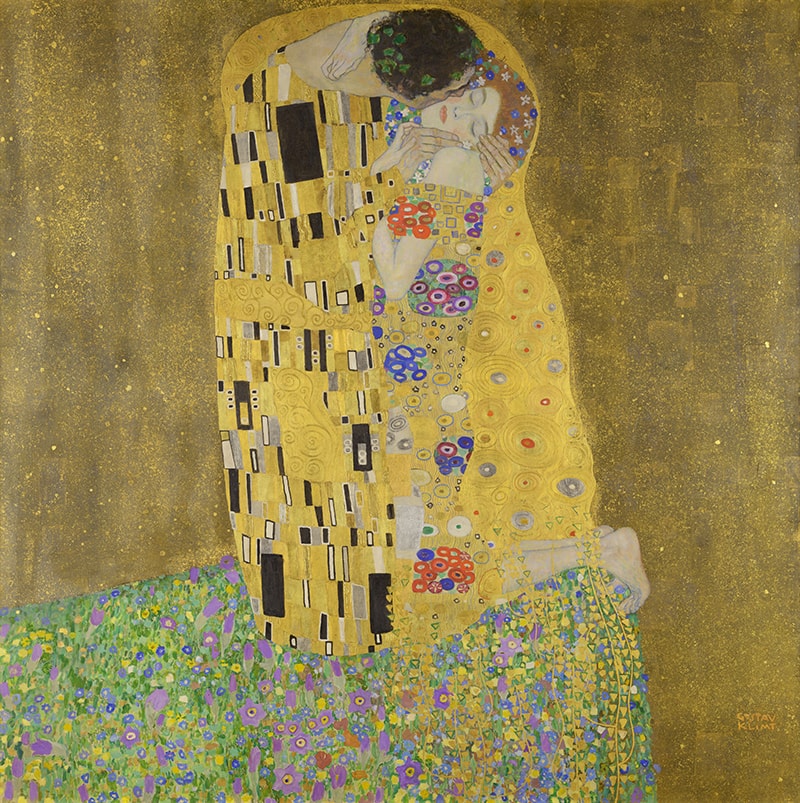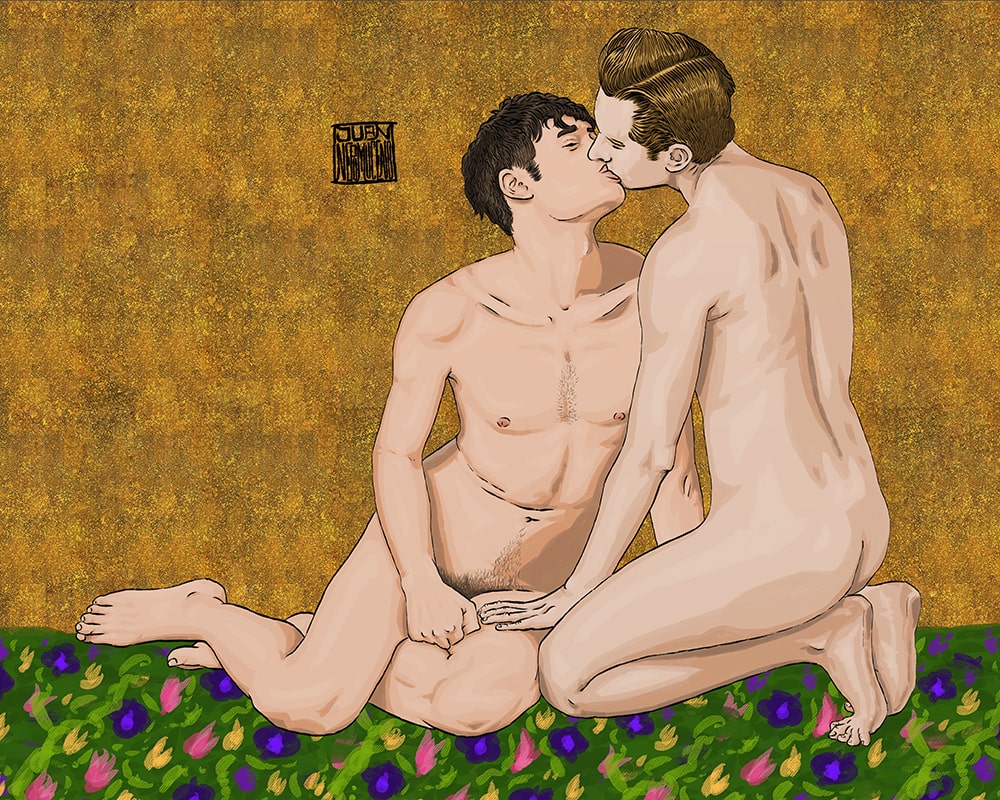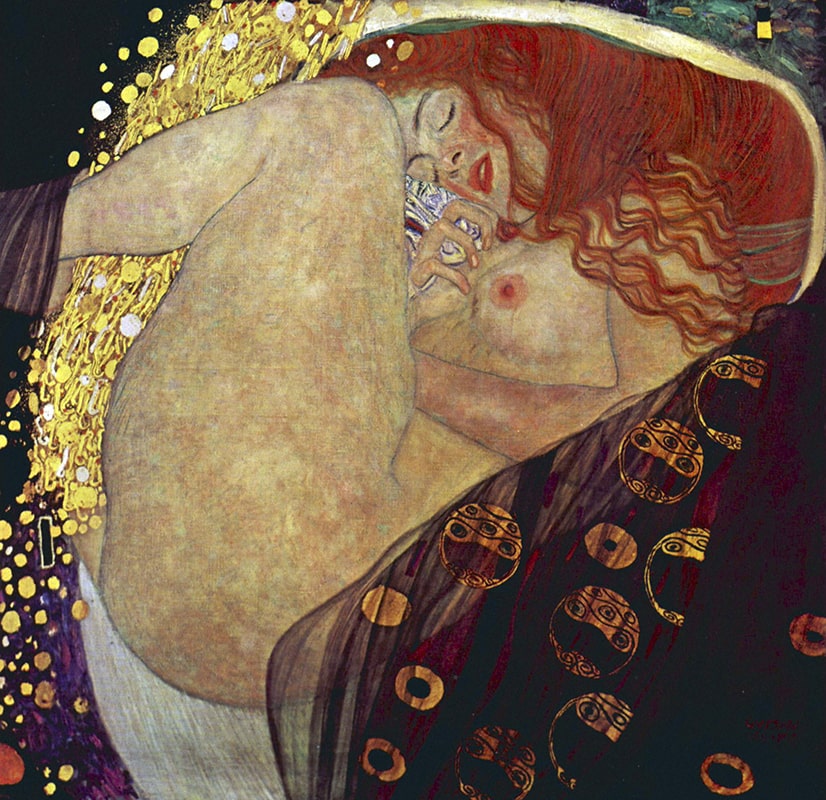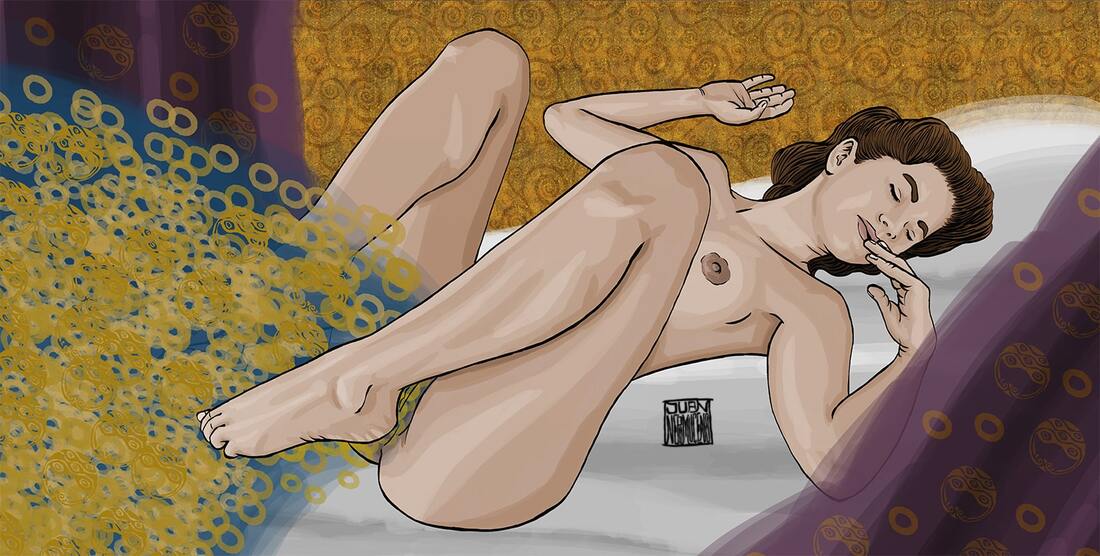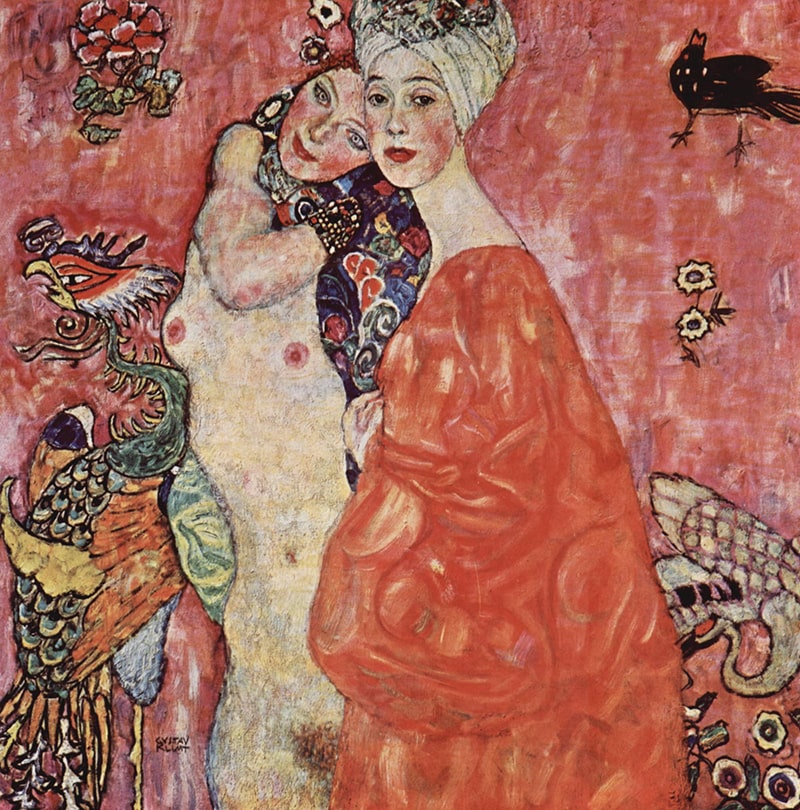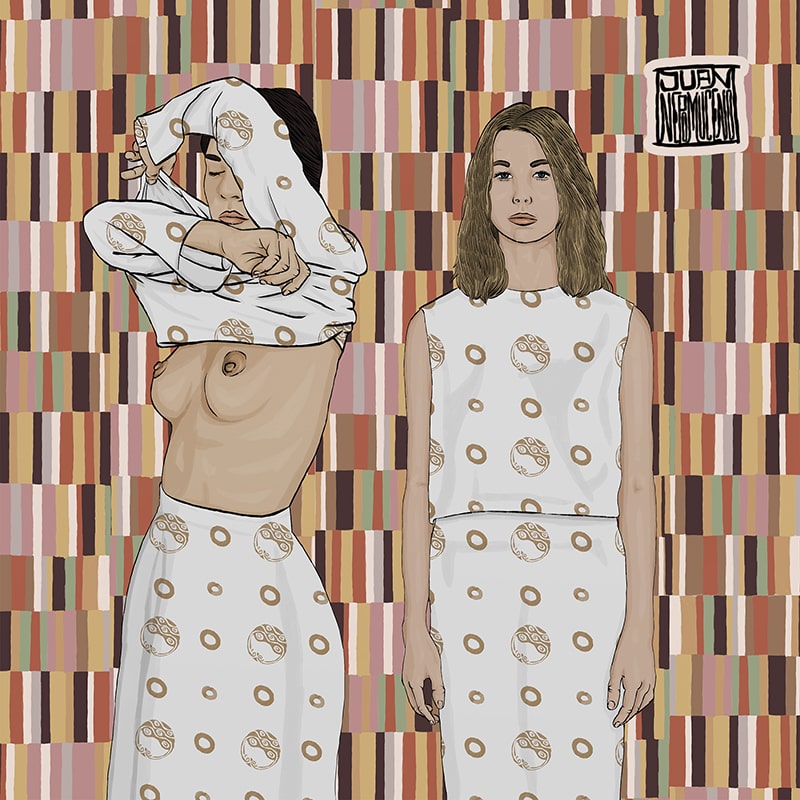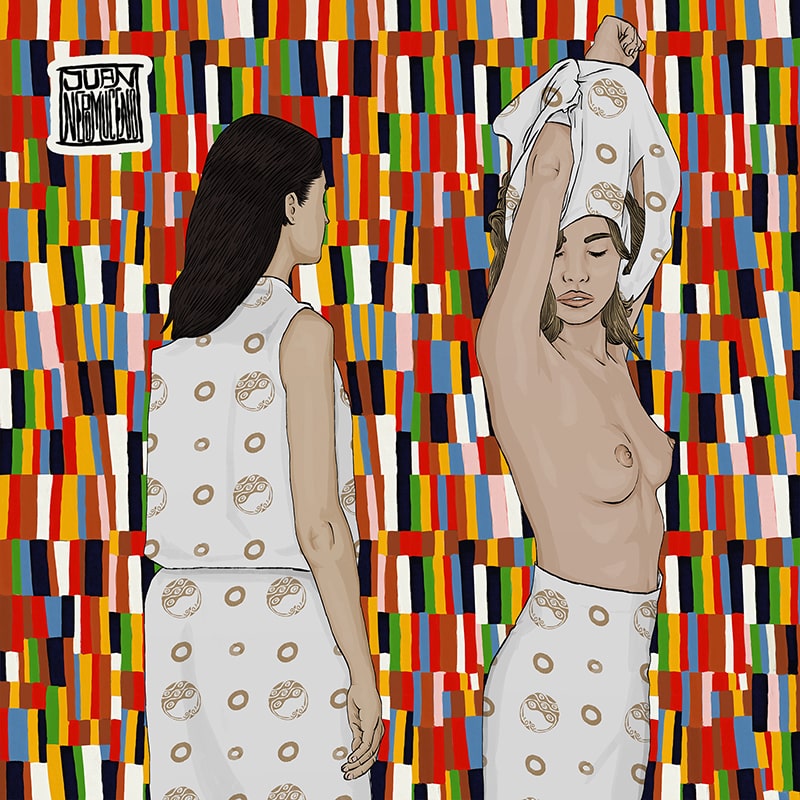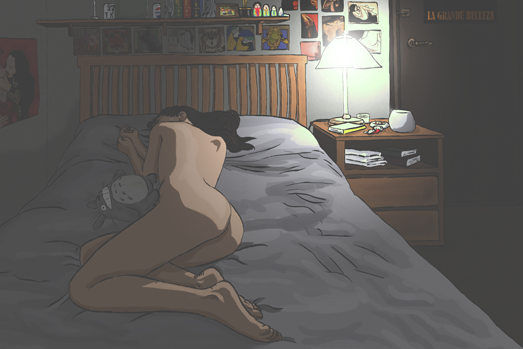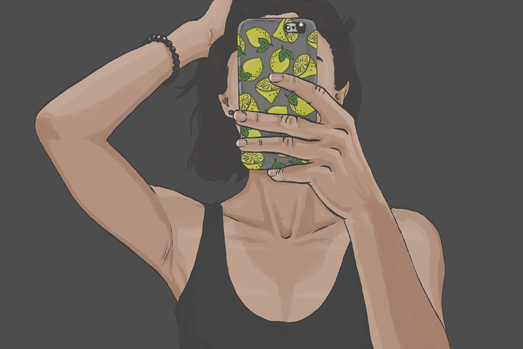Tribute to KLIMT |
Gustav Klimt's inspiration lives on
One hundred years after Klimt's death, it would not be fair to simplify our view of his art with the premise that "all art is erotic." It is necessary to immerse yourself in the Klimtian spirit to understand that his universe is more complex and always interesting.
I have worked hard over the last few years to pay direct tribute to some of Gustav Klimt's most significant pieces, giving them my vision and fusing their inspiration with my style. I hope you like this work and appreciate the effort and dedication behind it.
|
Nuda Veritas |
Nuda Veritas (1897)
At the end of the 19th century the art movement of the Secession was in full swing. Driven by the desire to fight against the most conservative vision of art, which until then had been dominated by the bourgeois and censoring elite, they intended to universalize it by making it more mundane and bringing it closer to all social strata. A new century came to Vienna with them.
In 1897 they created a publication that would be their propaganda vehicle: the Ver Sacrum magazine. After having been elected as president of the Secession by his fellow artists, Gustav Klimt took the reins of the third number of the magazine, for which he created some illustrations among which Nuda Veritas and The Envy (Der Neid) stand out.
Originally conceived as an ink drawing for the magazine, the Nuda Veritas illustration became the featured image of the third issue. With a forceful and revealing stroke, it came to confirm what was already known, that Klimt was an excellent sketcher. As he did with other works throughout his career, some time later he took up the idea again, resulting in the giant canvas that, with wavy and sensual lines so typical of Art Nouveau, claims an integral eroticism that ends with a quote from Schiller that the painter makes his own:
If your deeds and your art cannot please everyone, please a few. To please many is terrible." |
|
My naked truth
Nuda Veritas is undoubtedly one of Klimt's most attractive works when it comes to addressing this tribute. Compositionally, it is simple: just a girl posing frontally naked. The success of the work depends largely on the eroticism and sensuality that the model can exude with her attitude when facing her part of the job.
In the different versions that I have painted, adorned with a flower headband, the background and the frame try to imitate the original golden carvings so typical of Klimtian art. Perched on a pedestal, in which the name of the work can be seen engraved, they reflect in their mirror the naked truth of the artist.
|
Moving Water |
Bewegtes wasser (1898)
At the end of the 19th century, the Secession movement was at its height. Its members, championed by Klimt himself, longed for an opening in the world of art that would allow them to create and live on it outside the great state powers, seeking their patronage in more mundane circles, as well as freer and less restricted by the censorship. Leaving government commissions aside, Gustav opens a period of transition between his classical realist stage and the incipient revolutionary modernism of Art Nouveau.
The symbolist Klimt that transits towards Art Nouveau in the period of the change of centuries is an evolution of him that manages to perfectly dominate the artistic rules in order to break them. To be able to make the symbolist compositions of the mature Klimt, which masterfully break the rules of perspective, it is necessary to be a true master.
Influenced by Japanese prints and classical Greek art, Moving Water brings together all the issues discussed above. The artist uses the original Fish Blood illustration as a base and adds a series of elements that reinforce his oneirism, lesbian sensuality, even with a lascivious tone that would culminate years later in the double and masterful Water Serpents.
|
|
The stream of sensuality
The aesthetic question dominates ethics. The intention was to create a beautiful, sensual work that maintained the spirit of the original. As far as inspiration is concerned, it is clear that his most important point is the use of color. The original work appears cloudy, dark. I chose to add a background that is faithful to my creations, but that adapts perfectly to the final composition.
The result is a work of complex composition, which needs to be looked at several times. It overflows sensuality and eroticism, just like the original. The difficulty of its elaboration gives it a special halo, being perhaps the least belligerent of those that are part of the project, but it is also necessary to make art for the love of art.
|
The Hope |
Die Hoffnung (1903) - II (1907-08)
Made in its heyday, The Hope I and II constitute one of the greatest praises to women in all their dimensions. Flags of Gustav Klimt's style in the eyes of the art world, vindicate the female empowerment as the central figure on which the new art revolves, charged with sensuality and not for that reason stripped of the naturalness with which the Austrian artist intends to vindicate the role of women.
A notable difference can be seen between the two works whose completion is four years away in time. The first of these appears to us overwhelmingly erotic. We find ourselves with the complete nude of a shameless redhead, in fact, the exuberant reddish pubic hair only increases the feeling of perversity. Loaded with symbolism, the shapes and currents that adorn the painting allude to life and death, sensuality and sexuality.
The second version reveals a different Klimt, more relaxed. Pregnancy is the central theme, but is does not show it in such a strongly erotic way. The aggressiveness and morbidity are clearly attenuated, so that we find a woman of exuberant beauty but with a calm attitude. The symbolism is still present (around life and death, fertility and carnality), and the exaggeratedly baroque and ornate forms are the same. But nevertheless it is a work that transits in another dimension of the artist.
|
|
Glorification of moterhood
Recovering the spirit of Klimt's original work, my tribute is an exaltation of motherhood and the power of femininity. The first of my Hopes appears totally naked, in the same way that it happened with Die Hoffnung but, unlike this one, which showed her body in an overwhelmingly erotic way, she tries to cover her breasts with a delicate gesture that denotes a certain shyness.
The second of the Hopes tries to imitate the pose of the protagonist of Die Hoffnung II, with a relaxed but not so introspective air. She shows her breasts and her belly, and wears a skirt with a print that recreates that of the honored work. As for the ornamentation of the background, although I have respected the Klimtian gilding in both works, but suppressing all allegory, whether violent or vitalist, including only some fabrics with golden embroidery inspired by the works of the Austrian author.
|
Water Serpents II |
Wasserschlangen II (1904-1907)
At the beginning of the 20th century, after abandoning the Secession movement and retiring to live on the outskirts of Vienna, Klimt began a period of greater creative freedom, in which he produced some of his most famous and recognized works and increased his degree of eroticism.
At the end of the 19th century there had been a transversal movement to recognize or enhance the value of the female figure, represented by artists as diverse as Courbet or Toulouse-Lautrec. This marked trend took on a new dimension with the creations of the beginning of the century by Gustav Klimt, who endowed the women protagonists of his paintings with a freedom, eroticism and sensuality practically unknown until then, within his modernist-symbolist style.
Klimt painted a first version of Water Serpents in 1904, and took up the idea again in 1907. Moving away from the golden ornament of previous works, he added floral and aquatic elements to mark one of his most symbolic works. The female protagonists swim in the current like sensual snakes, referring to elements considered sexual by Freudian psychology. It is a dreamlike and transgressive work with classical compositional perspectives.
|
|
Overflowing eroticism
The beauty of the captured scene has the mission of captivating the viewer. The colored mosaics and capers in the background, the golden ornaments, the waves that fade as if they were foaming water, and the floral decorations contribute to creating that dreamlike aura so present in much of Klimt's work.
Despite being an aesthetic tribute, there is a certain ethical foundation in it: from the point of view of sexuality. Klimt reflected in his works a latent but evident sensuality and lesbianism, very controversial at his time. Today should be a won fight, but it is not. With every gesture and act we fight to normalize sexual freedom and gain some ground for tolerance.
|
The Kiss |
Der Kuss (1907-1908)
Of a rebellious nature and habitually contrary to the moral and aesthetic canons of his time, Gustav Klimt marks a new stage in his evolution and subtly dilutes the presence of his "pornographic perversion" in what is possibly his most famous and recognized work. The Kiss, in addition, has a great reception among the public of its time and is easily sold.
The arrival of the new century brought important changes to Klimt's life. After leaving the Secession and moving to the outskirts of Vienna, he quit working for the state and became a portraitist of bourgeois wives. His new work revolves around his main motif: a feminized and sensual universe.
It is not clear whether the models for The Kiss are Klimt himself and his muse and lover for years, Emilie Flöge -a great collaborator and inspiration for part of his work-. Unlike other works, this one escapes censorship and the male figure becomes the protagonist, acquiring a dominant role. It is one of his less explicit and more sensual works.
|
|
A Kiss in modern times
Is it possible to pay homage to Klimt's magnum opus without falling into clichés? I wanted to keep the sensuality without sacrificing the essence or the original motivation and vindication. After much thought, I decided that it was necessary to update the theme. Klimt's universe was feminized. The artist was controversial and a womanizer, but in a way he empowered women by making them protagonists without excuses, giving them sexual freedom. He fought against established censorship and morality.
Trying to adapt these motivations over time, I decided that the central theme of my tribute should be the vindication of sexual freedom against censorship and the most stagnant morality. For this reason, the protagonists of my version of the Kiss are two men, two people expressing their love in equality and in freedom. Long live free love!
|
Danae |
Danaë (1907-1908)
Klimt had somehow abandoned his most erotic essence with the creation of The Kiss, which had partly led him to be the standard-bearer of the Secession and challenge the moral and aesthetic canons of his time. With Danae returns to his most authentic path, that of the most symbolic and overflowing eroticism. It is possibly his most erotic and passionate work.
The Oracle predicted to Acrisio, king of Argos, that a grandson who had not yet been born would be his murderer. To prevent this, he locks his daughter Danae in a tall bronze tower. The libidinous Zeus discovers the facts, and turns into a shower of gold to enter the pressure and impregnate the young woman. It was too rich a Greek myth for Klimt to pass up the opportunity to give him his vision of it.
The protagonist is a red-haired girl, a cliché very much to Klimt's liking, whom we see lying in a forced fetal pose but at the same time harmonically golden and pleasant. Wrapped in purple fabrics masterfully painted to simulate transparencies and decorated with gold stamping in the purest Klimtian style, the beautiful young Danae moans with pleasure upon receiving the golden jet that represents Zeus's semen. Danae is the orgasm of art.
|
|
The ecstasy of gold
Along with The Kiss, Danaë's chapter was the most essential of this tribute. It is a work with such a symbolic and erotic charge that I wanted to do it with great eagerness and enthusiasm, but also as faithfully as possible to the original, which requires a great effort. For this, I had the collaboration of an excellent model, and we tried to naturalize the pose so that it would not be forced and unreal.
Danae lies with her legs folded over her, apparently relaxed after the ecstasy of love. As in the original work, an orgasmic golden shower covers and overwhelms her. I tried to make the ornamentation as faithful as possible to the original, painting translucent purple fabrics with stamping in gold motifs. In addition to this, she appears lying on an immaculate white bed, and the background is a gold carving typical of Klimtian art.
|
The Girldfriends |
Die Freundinnen (1916-1917)
Retired on the outskirts of Vienna and somewhat removed from the foreground of the capital today, the late Klimt gives us a series of fresh and colorful artworks, far removed from the exaggeratedly ornate baroque style that had been so characteristic of his classical work. However, it does not abandon the motives that had been its emblem: the woman continues to be the central axis of his creative universe, focused from eroticism and lesbian love.
Having become a portraitist of bourgeois women, femininity continues to be the central motif of his work. But we appreciate in the works of his final stage a substantial change in the color palette, in the style and in the influences. Here we are presented with a clearly calmer Klimt. The mosaics, the golden ornaments and the baroquely charged prints have given way to an appeased use of color and in chromatic harmony with the content, revealing clear Asian and Impressionist influences.
The Girlfriends cannot be visited in any museum, nor does it belong to any private collection, because it was destroyed at the end of World War II, along with other works by Klimt and other artists, in the fire at Immendorf Castle, caused by Nazi troops fleeing from allied advancing. Another example of the chaos caused by intolerance and totalitarianism.
|
|
Boundless colorism and sensuality
I wanted to pay double tribute to Klimt's original work: two approaches to the same couple changing roles. I did it freely, changing some important details such as the clothes (the pattern is inspired by the work Danae) or the background (in turn inspired by the exotic mosaics of the Stoclet Palace in Brussels, the work of the muralist Klimt).
The fact of making these compositional and ornamental decisions when carrying out the work does not respond to any censorship intention on my part, not even to break with the inspiration of the original works. It is simply a question of aesthetics and availability of the models. I have the belief that there is also sensuality in the distance that is maintained between the two young girls who watch the other undress alternately. Contact or full nudity is not always necessary to transmit eroticism, sensuality and love.
|
Visita mi tiendaEncuentra una selección de mis obras con ofertas muy interesantes
|

